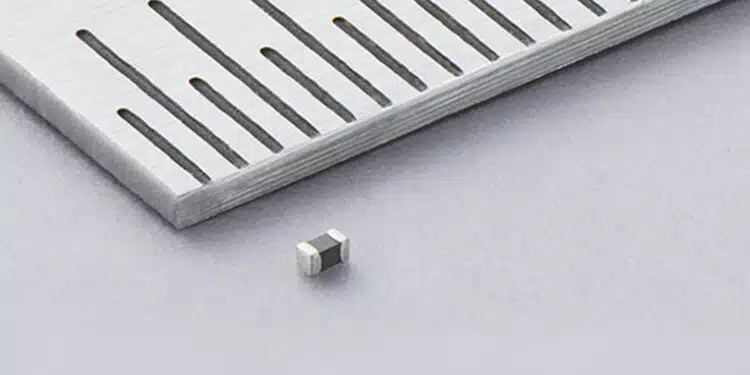Murata Manufacturing Co., Ltd. has developed 0603M size (0.6 x 0.3 x 0.3 mm) copper electrode NTC thermistors “NCU03XH103F6SRL” and “NCU03XH103F60RL” for markets such as the automotive market where there is a demand for high reliability electronic components.
This product is an expansion of the NCU series size lineup. Mass production has already begun, and samples can also be provided.
As advances are being made towards automated driving and IoT integration in the automotive market, circuit boards are being made with an increasingly larger number of electronic components, and in turn, higher component densities.
With the increasing sophistication of ADAS/telematics technologies, there are higher loads on electronic components, amplifying the issue of component overheating. As a result, there is a heightened demand for overheating detection and temperature monitoring technologies.
We have taken advantage of Murata’s years of processing technology development experience to create a 0603M size (0.6 x 0.3 x 0.3 mm) product that can be used for high reliability applications. Compared to Murata’s existing products (1005M size), this product has an approximately 80% lower volume and approximately 70% smaller mounting area.
Murata will continue to expand our product lineup to meet market demand. By responding quickly to market demand, we also contribute to further improvements in circuit board component densities and downsizing of devices for high reliability applications.
Features
- Works with automobiles and other systems that require high reliability components. Downsizing (0603M size) achieved with copper electrodes.
- Approximately 80% lower volume and approximately 70% smaller mounting area than Murata’s existing products (1005M size). Because this product has the same characteristics as our existing products, there is no need to change the circuit board design when replacing an existing product with this product. This product will also help our customers increase their component density and save space on the circuit board.
- Small in volume and capable of fast response.
Source: Murata
































